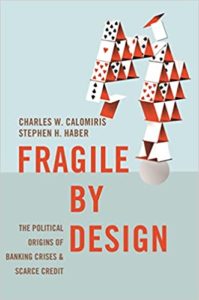President Biden announced plans to forgive between $10,000 and $20,000 in student loan debt for individuals earning up to $125,000 a year and married couples earning up to $250,000. There are many criticisms one could make of this proposal. Here I consider just one – the precedent it creates and the expectations this creates for the future.
Whenever the government engages in a bailout, it creates the expectation of future bailouts. Someone debating taking out a student loan today may be more inclined to do so than before, because they might now expect at least some portion of the debts they promise to pay back will actually get passed on to the taxpayer. According to a recent story in the Washington Post, this isn’t simply idle speculation on my part – we’re already seeing it happen:
Some students looking to take advantage of the promised forgiveness have already signed up for more loans, according to Betsy Mayotte, president of the Institute of Student Loan Advisors.
“There are people who are applying for loans for this semester or more loans than they had originally applied for because they assume they’re going to be forgiven,” said Mayotte, who works closely with student and parent borrowers.
This fall, millions of high school seniors will begin applying to college for the 2023-2024 academic year. One wonders if they might overextend themselves with the expectation that they, too, will someday not have to repay part or all of their loans.
Is there a way to solve this new moral hazard problem? Perhaps, but it wouldn’t be pretty. A history of the English banking system provides an example of what I mean.

As documented in Fragile By Design: The Political Origins of Banking Crises and Scarce Credit, by Charles Calomiris and Steven Haber, throughout the nineteenth century, the Bank of England made a habit of bailing out financial institutions when they became illiquid or insolvent. Predictably, this created a significant moral hazard problem, and the British banking system had suffered from severe banking crises in 1825, 1836, 1847, and 1857. Eventually, the Bank of England realized they couldn’t keep this up. They announced a new policy, declaring they would be much more strict as a lender of last resort when a bank was illiquid, and they would not save institutions which had become insolvent.
But political talk is cheap – it often needs to be demonstrated to be believed. Unfortunately, this meant for the new policy to effectively reduce moral hazard, it needed to actually be demonstrated, which in turn required the occurrence of another banking crisis. When Overend & Gurney collapsed in 1866, this new commitment was put to the test. The Bank of England stood firm and allowed Overend & Gurney, one of England’s largest financial entities, to fail on account of its insolvency. This made their stated commitment credible – and the performance and stability of England’s banking system was significantly improved for the next several decades.
We may well be entering a situation where even if the administration insists this is a one time program, the expectation of future bailouts or loan forgiveness will take root. And it may end up being the case that the way to dislodge this expectation is a full blown debt crisis being allowed to occur. Lacking that, we may end up stuck with an ongoing series of bailouts, followed by further expectations of more bailouts, leading to more debt accumulation, and so on.
A pessimistic outlook? Possibly. But am I wrong?
Kevin Corcoran is a Marine Corps veteran and a consultant in healthcare economics and analytics and holds a Bachelor of Science in Economics from George Mason University.


READER COMMENTS
MarkW
Aug 30 2022 at 3:12pm
We may well be entering a situation where even if the administration insists this is a one time program, the expectation of future bailouts or loan forgiveness will take root.
And there’s no way the administration is going to give any such an assurances. On the contrary, I believe the idea is to make expectations of possible future rounds of student-loan forgiveness part of the Democratic brand going forward.
nobody.really
Sep 6 2022 at 12:26pm
Seems likely. Just as Republicans have made tax holidays part of their brand. We have corporate tax laws. US corporations evade them by parking gains in other jurisdictions–but have to bear the burdens of not having that cash to use in the US. But the corporations know that eventually Republicans will grant a tax holiday and the firms will get to repatriate their earnings.
Still, things could be worse. In France, politicians running for office would propose to forgive all parking tickets. And in the run-up to elections, people would park EVERYWHERE. Emergency vehicles would not be able to get through city streets, and people would die.
If we added up the costs of all the various bribes that parties offer to their patrons, I wonder which party would rack up a larger tally?
Johnson85
Aug 31 2022 at 6:07pm
I don’t think there’s any doubt that a lot of people are going to max out their federal student loans going forward. Paying a little bit of interest is not that expensive for the potential of having a lot of debt forgiven.
I know a lot of people kicking themselves for paying off their student loans. I know a reasonably successful young attorney and his attorney wife taking a clerkship that are going to be able to keep their AGI below $250k after maxing out 401k’s and 403b’s, and knock out about half of their remaining law school debt. If I had a kid in college, I would have him max out his loans and put what he can in IBonds and the rest in either other bonds, or go ahead and role the dice on stocks and wait to see what happens with future forgiveness.
Comments are closed.